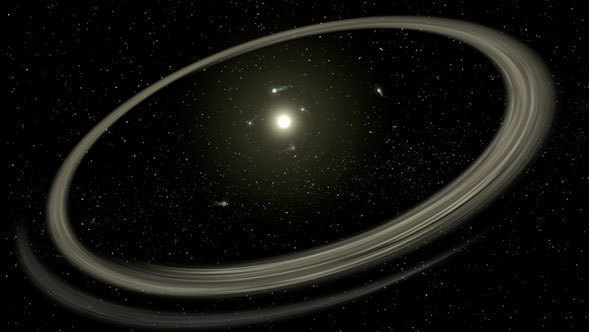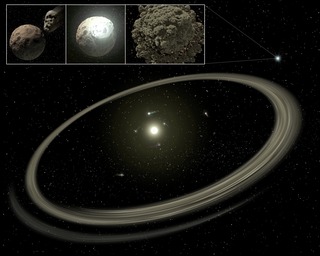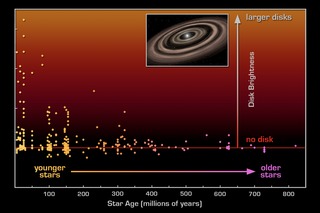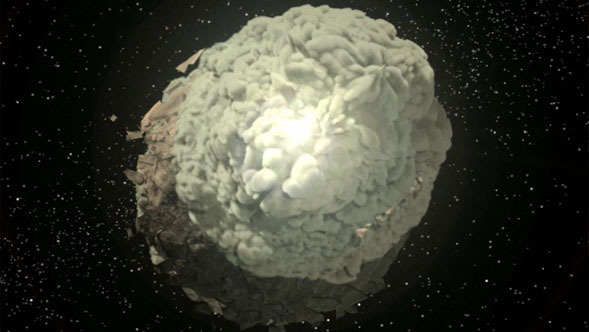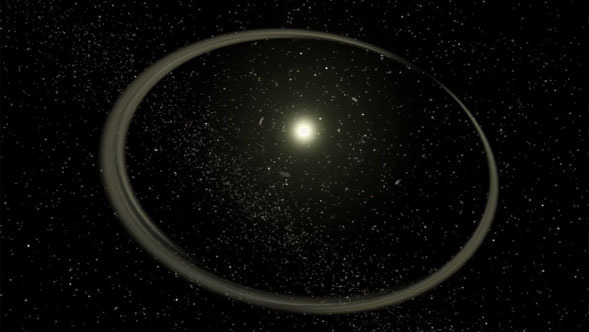Swirling Rings of Dust
Science Animations Video • October 18th, 2004 • ssc2004-17v2
This animation depicts colliding rocky bodies in an early planetary system. Such collisions form the basis of the planet-building process. New findings from NASA's Spitzer Space Telescope show that these catastrophes continue to occur around stars even after they have developed full-sized planets, when they are as old as one hundred million years. For reference, our own Sun, at 4.5 billion years old, is far past this late stage of planet formation.
In this movie, full-sized planets circle a central star. Collisions between outer rocky bodies are visible as bright flashes. The dust generated from these collisions can be seen spreading out to form a large ring of dust, or "debris disc," around the star. In time, this dust will settle and a mature planetary system will emerge.
Spitzer was able to see the dust generated by these collisions with its powerful infrared vision.
Video Credit: NASA/JPL-Caltech/T. Pyle (SSC-Caltech)
